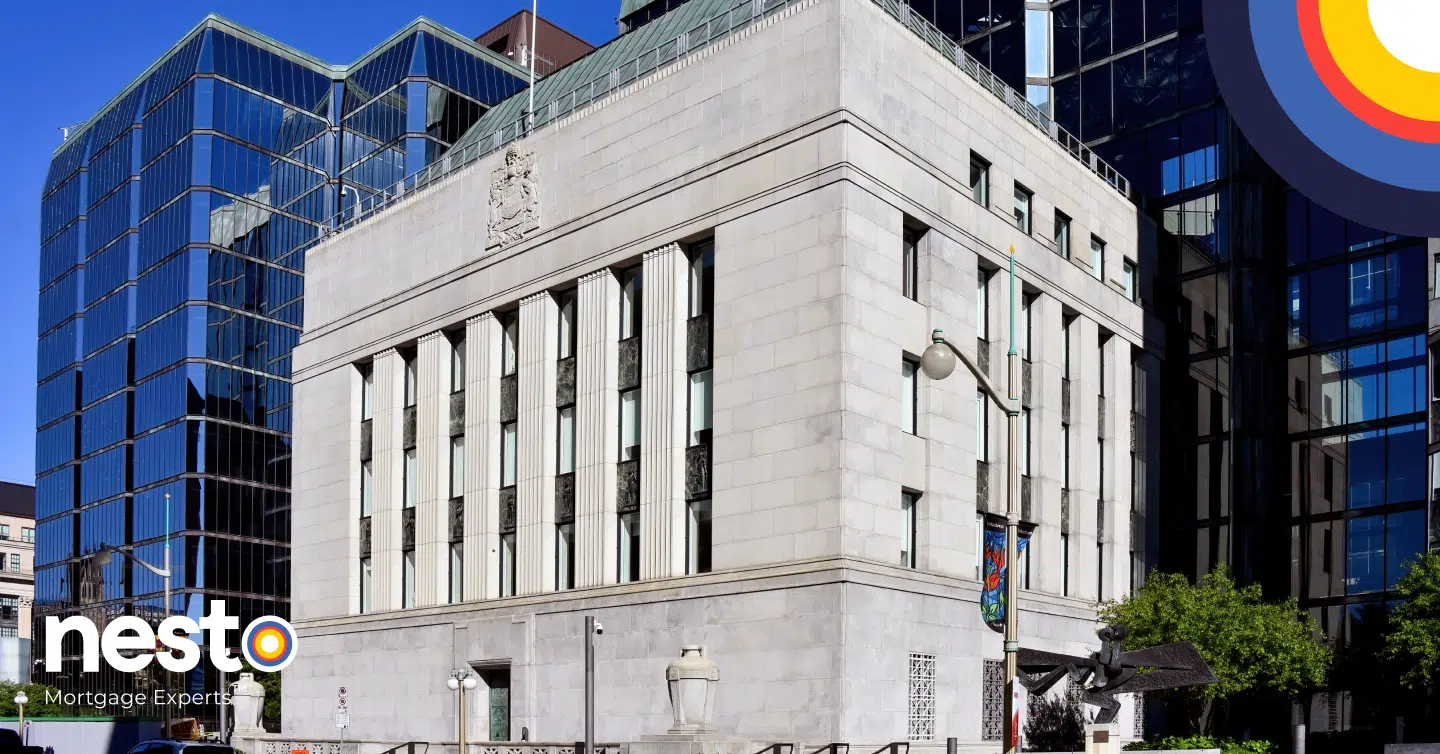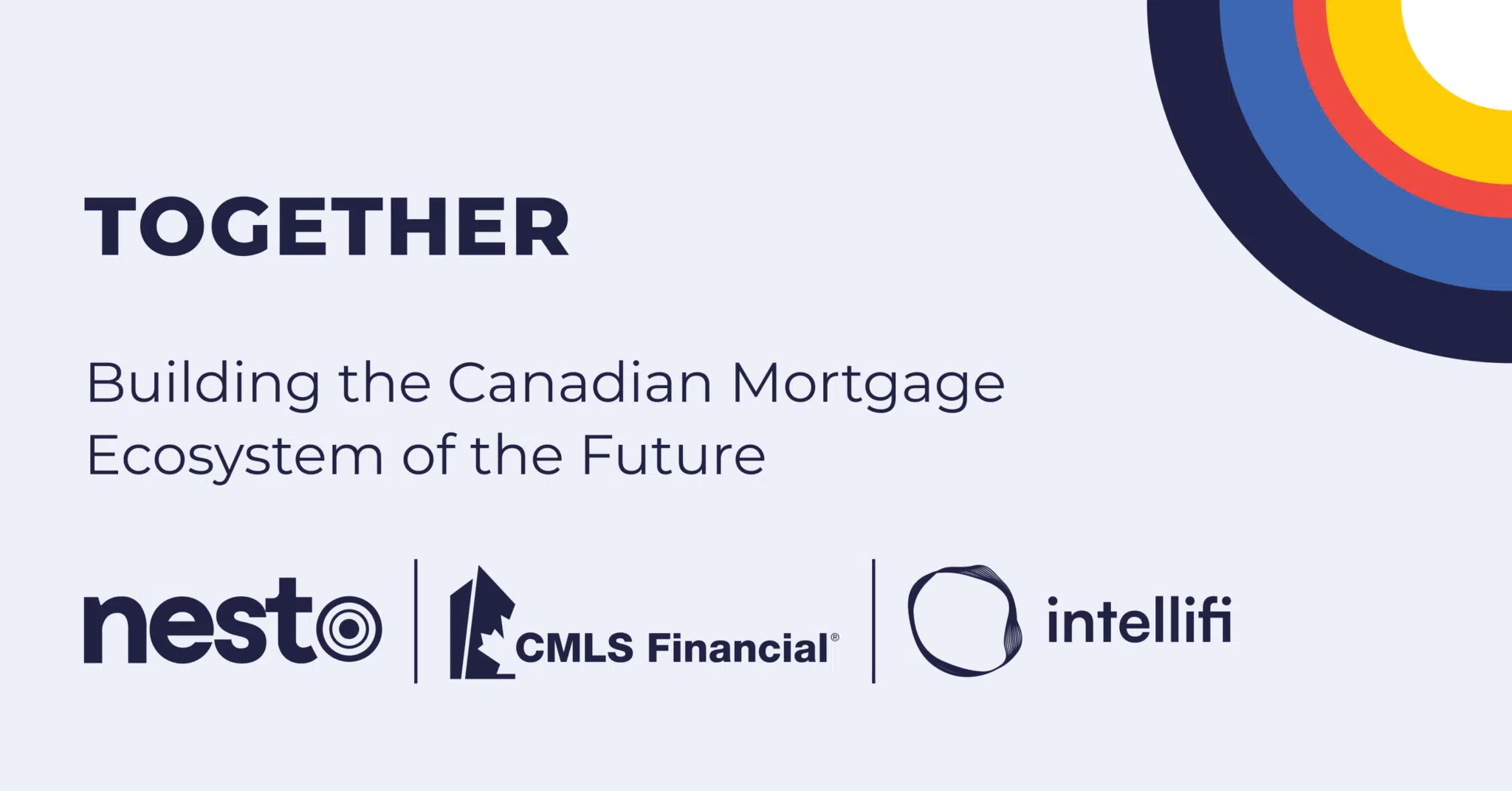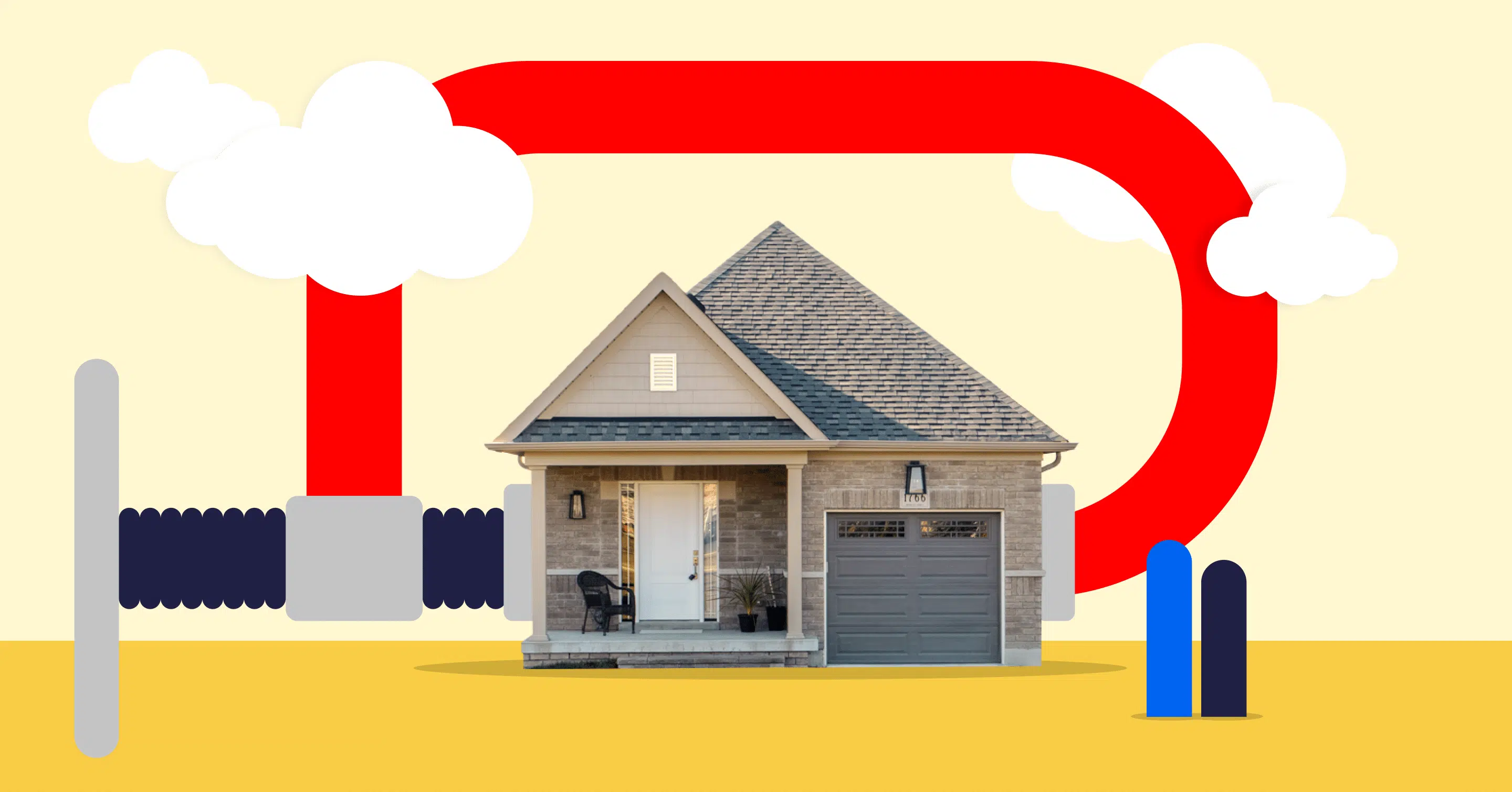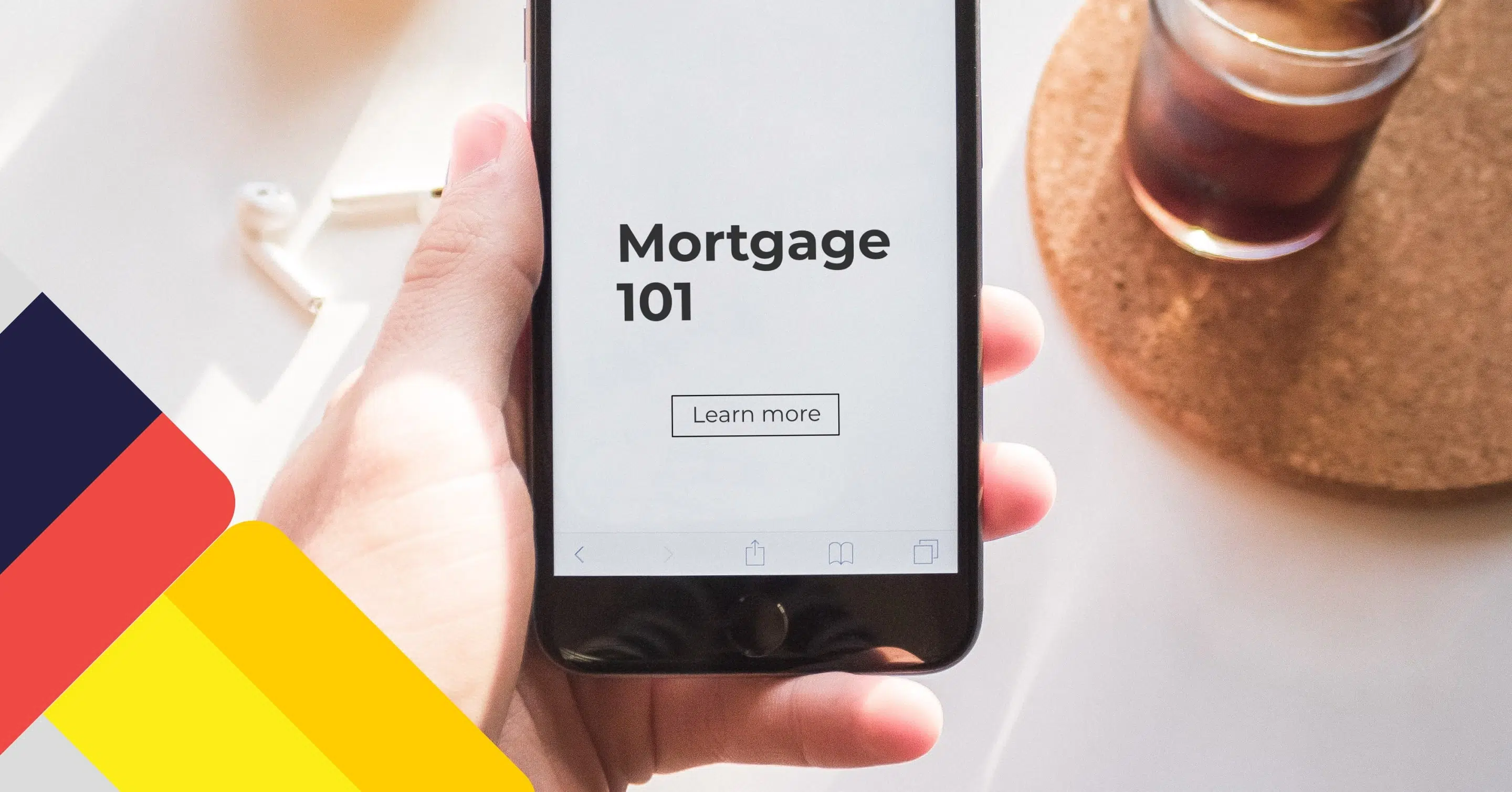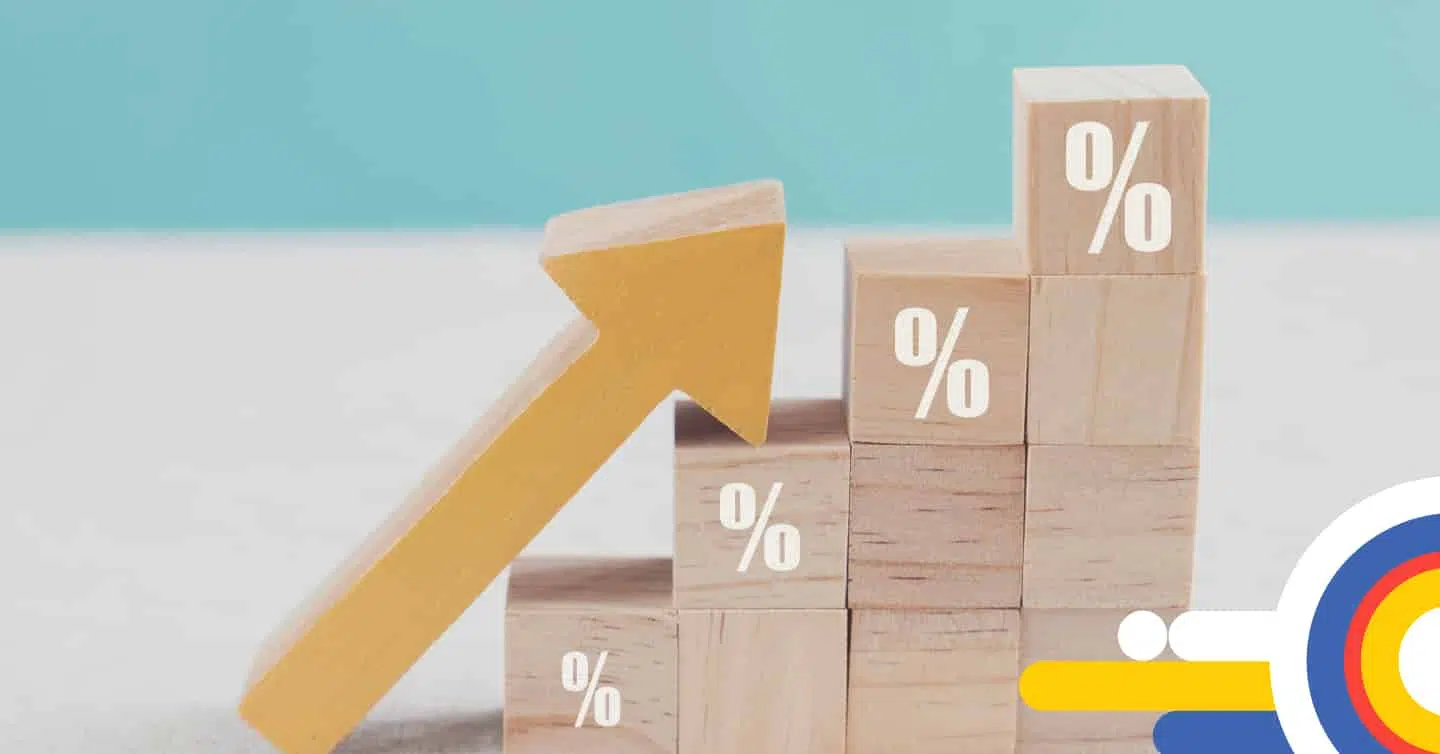Canada Prime Mortgage Rate History
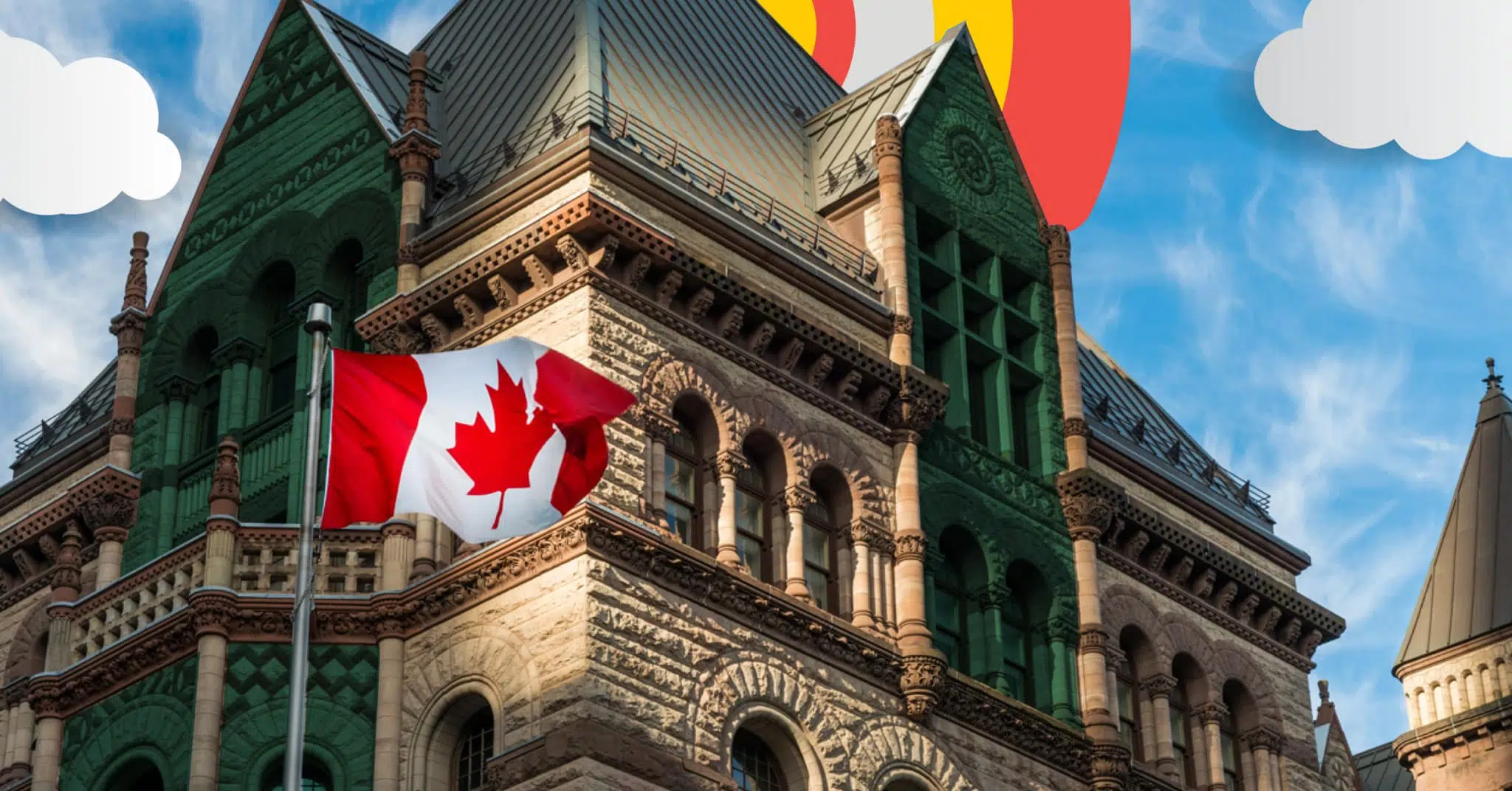
Table of contents
Canada’s prime rate may sound like a banker’s metric, but it directly impacts your wallet, especially if you have or are considering a variable mortgage. Whether you’re renewing a mortgage, applying for a HELOC, or managing a line of credit or other revolving debt, movements in the prime interest rate can significantly influence your cost of borrowing.
We’ll review the entire history of Canada’s prime rate, from its inception in 1935 to the present, explain how it’s set, and demonstrate its connection to the Bank of Canada’s policy rate. We’ll also cover how fluctuations affect borrowers across different loan types, including expectations for the direction of the prime lending rate in the near to medium term.
Key Takeaways
- Canada’s current prime rate is 4.95%, closely tied to the Bank of Canada’s overnight rate of 2.75%.
- Changes in the prime rate directly affect variable-rate mortgages, HELOCs, and credit lines, making it a critical factor for borrowers.
- Prime rates fluctuate in response to changes in inflation and expectations of economic growth.
What Is the Prime Rate in Canada?
The prime rate is the interest rate that banks and lenders use as a benchmark to set interest rates on variable-rate loans and credit lines. This includes variable-rate mortgages (VRM) and adjustable-rate mortgages (ARM), home equity lines of credit (HELOC), personal lines of credit, and even some credit cards.
While each financial institution, bank and mortgage lender technically sets its prime rate, Canada’s major banks usually match each other to stay competitive. This benchmark rate typically moves in lockstep with the Bank of Canada’s overnight rate, which is the central bank’s benchmark lending rate for short-term (overnight) loans between financial institutions.
Current Prime Rate in Canada
As of July 10, 2025, the prime rate in Canada is 4.95% across all major banks and lenders, including RBC, TD, BMO, Scotiabank, CIBC, and National Bank. TD Bank continues to list a higher rate (4.95% + 0.15%) specifically for its variable mortgage products.
The current prime rate has remained steady since the Bank of Canada last adjusted its policy rate to 2.75%, reflecting a cautious stance amid economic uncertainty and growing core inflation.
Prime Rate History in Canada (1935–2025)
Canada’s prime rate has fluctuated significantly over the years, influenced by inflation, central bank policy, and broader macroeconomic events. Below is a summary of how the prime rate evolved over time, especially during key moments.
Bank of Canada was Formed in 1935
The Bank of Canada was founded in 1935 in Ottawa to make decisions on the financial aspect of the Canadian economy. The BoC decides the overnight target rate and can make changes at any time. Since its inception in 1935, it helped lead the rise from the great depression that crippled the world economy.
1935 – 1955: The Great Depression, World War II & Post War
From the 1930s, the great depression and World War II significantly impacted Canada’s economy, causing strong criticism of the country’s financial system. At the time, the prime rate in Canada, which started at 2.5% in 1935, had by the end of 1955 fell to 2.0%. Although there was a sharp fall to 1.5% in 1945, Canada’s role in supplying natural and manufactured resources during the Second World War helped beef up its economy.
1977 – 1991: Global Oil Crisis
After World War II, the Canadian economy continued to rise slowly along with the prime rate until it hit a high point of 10.28% in October 1978. The oil boom due to record high prices caused by the OPEC oil embargo saw the prime rise even further, up to 20.03% in 1981, before falling steadily to 7.14% in March 1987.
1991 – 2008: Economic Recovery
During the Canadian economic recovery, the Bank of Canada introduced the inflation rate targeting to prevent the prime rate from falling below expectations.
2009 – 2017: The Great Financial Crisis
The great financial crisis of 2009 saw the BOC prime rate slump below 1%, reaching a record low of 0.5%. Furthermore, the fall in oil prices in 2014 also contributed to Canada’s recession, which affected the rates, causing them to fall from their recovery rate of 1.25% back to 0.75% in 2015.
2018-2024: COVID and Inflation
The Canadian economy grew significantly after the great financial crisis, and a slow rate rise was witnessed. Although the 2019 inflation prevented the BOC prime rate from increasing beyond 1.75% as of 2019, the COVID pandemic also caused a reversal that saw the BOC overnight rate plunge to 0.25% by the first quarter of 2020. Today, the BOC rate stands at 2.75%, while the Canadian bank prime rate is 4.95%.
Source: bankofcanada.ca
Prime Rate Trends
- 1980s: Extremely high prime rates, peaking over 20% to fight inflation.
- 2000s: Rates stabilized, mainly between 2% and 6%.
- 2020–2023: The pandemic led to record lows, followed by rapid increases in response to inflation.
- 2024–2025: Rates declined again as inflation cooled and the BoC eased monetary policy.
Prime Rate Timeline 2010–2025
Canada’s prime rate has responded to major economic shifts, including financial crises, inflation surges, and global slowdowns. Here’s a breakdown of changes from 2010 to 2025, illustrating how rapidly rates can fluctuate and why tracking them is crucial for mortgage borrowers.
If you hold a variable mortgage, HELOC or line of credit, prime rate changes would have directly impacted your interest payments:
| Date | Prime Rate | Change |
|---|---|---|
| March 13, 2025 | 4.95% | -0.25% |
| January 29, 2025 | 5.20% | -0.25% |
| December 11, 2024 | 5.45% | -0.50% |
| October 23, 2024 | 5.95% | -0.50% |
| September 4, 2024 | 6.45% | -0.25% |
| July 24, 2024 | 6.70% | -0.25% |
| June 5, 2024 | 6.95% | -0.25% |
| July 12, 2023 | 7.20% | 0.25% |
| June 8, 2023 | 6.95% | 0.25% |
| January 25, 2023 | 6.70% | 0.25% |
| December 8, 2022 | 6.45% | 0.50% |
| October 27, 2022 | 5.95% | 0.50% |
| September 8, 2022 | 5.45% | 0.75% |
| July 14, 2022 | 4.70% | 1.00% |
| June 2, 2022 | 3.70% | 0.50% |
| April 14, 2022 | 3.20% | 0.50% |
| March 3, 2022 | 2.70% | 0.25% |
| March 30, 2020 | 2.45% | -0.50% |
| March 17, 2020 | 2.95% | -0.50% |
| March 5, 2020 | 3.45% | -0.50% |
| October 25, 2018 | 3.95% | 0.25% |
| July 12, 2018 | 3.70% | 0.25% |
| January 18, 2018 | 3.45% | 0.25% |
| September 7, 2017 | 3.20% | 0.25% |
| July 13, 2017 | 2.95% | 0.25% |
| July 16, 2015 | 2.70% | -0.15% |
| January 28, 2015 | 2.85% | -0.15% |
| September 9, 2010 | 3.00% | 0.25% |
| July 21, 2010 | 2.75% | 0.25% |
| June 2, 2010 | 2.50% | 0.25% |
Source: bankofcanada.ca
Get approval on your low rate today
No big bank bias, just commission-free experts ready to help you.
What Influences the Prime Rate in Canada?
The most critical factor influencing Canada’s prime rate is the Bank of Canada’s target for the overnight policy rate, often referred to as the policy interest rate, or simply the policy rate. When the Bank raises its policy rate, it becomes more expensive for banks to borrow from each other. They then pass on the interest cost to their clients by increasing their prime lending rate.
Conversely, when the BoC lowers its policy rate, banks typically reduce their prime lending rate within a few days to stay competitive and stimulate borrowing. While banks aren’t required to follow the BoC’s moves exactly, the spread between the overnight rate and the prime rate has remained around 2.20% since 2015.
Example: If the BoC policy rate is 2.75%, most banks will set their prime rate around 4.95%, which is a difference of 2.20%.
How Does the Prime Rate Affect Mortgage Rates?
Variable-rate mortgages are directly tied to the prime rate. When you’re offered a variable mortgage loan, the interest is usually quoted as:
Prime Rate ± a spread (delta)
Example: Prime – 0.60% = Mortgage Rate
When the prime rate rises or falls, your mortgage rate adjusts accordingly, impacting your amortization and interest portion of each payment.
Variable Mortgages and the Prime Rate
Most lenders offer variable mortgages at a discount to the prime rate (e.g., Prime – 0.25% or Prime – 0.60%). The better your credit score and down payment, the more favourable your rate may be. However, you may still get a better rate discount on a high-ratio mortgage even though you’ll need a lower downpayment, as it carries less risk for the lender.
Fixed vs Variable Rate Strategy in a Changing Environment
Choosing between fixed and variable mortgage rates depends on two key factors: your outlook on interest rates and your ability to absorb risk.
If you’re uncertain, mortgage lenders typically offer convertible mortgages. This feature allows you to switch your adjustable-rate mortgage (ARM) or variable-rate mortgage (VRM) into a fixed-rate mortgage before it matures, without incurring a penalty.
Historical context helps borrowers make better decisions. In periods of rapid hikes (like 2022–2023), fixed rates offer peace of mind. But during rate pauses or cuts (like now), variable interest rates may become more appealing, especially when paired with prepayment flexibility or low penalties. If you’re planning to renew or refinance, comparing variable vs fixed rates can result in substantial savings over the term.
Here’s how fixed and variable rates perform in a changing rate environment:
- Fixed Rates: Ideal when rates are expected to rise. You lock in a predictable rate and monthly payment over the mortgage term.
- Variable Rates: More attractive when rates are falling or holding steady. These typically start lower than fixed rates, but depending on the type of variable mortgage, mortgage payments (ARM) or interest-carrying costs (VRM) may fluctuate over time.
Get approval on your low rate today
No big bank bias, just commission-free experts ready to help you.
Prime Rate Forecast
As of July 2025, economists anticipate at least one more rate cut by year-end. Bond market pricing suggests the BoC may lower its overnight rate by another 0.25%, which would likely bring the prime rate down to 4.70%.
Indeed, lower mortgage rates are good news for borrowers with variable-rate mortgages or HELOCs. However, if you’re considering switching to a fixed mortgage, now may be a good time, as fixed mortgage rates are expected to increase over the long term.
Canada’s central bank policy is data-driven, so if inflationary price increases unexpectedly rebound, future cuts could be delayed. That’s why it’s essential to have a mortgage strategy that aligns with both unique needs and long-term goals.
US Prime Rate vs Canadian Prime Rate
The US prime rate is currently 8.00%, significantly higher than the Canadian prime rate of 4.95%. This divergence reflects different inflation trends and monetary policy paths between the two countries.
The US Federal Reserve uses the Fed Funds Rate (FFR) as its benchmark, while Canada uses the BoC overnight rate. Despite similarities, structural and policy differences mean the two prime rates don’t always move in sync.
Frequently Asked Questions (FAQ) About the Canadian Prime Rate
What is Canada’s current prime rate?
As of July 10, 2025, currently Canada’s prime rate is 4.95% at all major banks.
How often does the prime rate change?
The prime rate changes when the Bank of Canada adjusts its target for the overnight policy rate, which can occur up to 8 times per year. The policy rate as of July 10, 2025 is currently 2.75%.
Does the prime rate affect mortgage rates in Canada?
The prime rate directly affects variable-rate mortgages, HELOCs, and many lines of credit, as their pricing is directly tied to the prime rate. Fixed rates are affected by bond yield movements, indirectly influenced by changes to the BoC policy rate.
Do all banks have the same prime rate?
Typically, all banks in Canada adjust their prime rates a day or two after the Bank of Canada changes its policy rate. TD uses a different prime rate for their variable mortgage products.
Is the prime rate expected to go down this year?
Markets anticipate one more rate cut by year-end, which could lower the prime rate by another 25 basis points (0.25%).
Final Thoughts
Whether you’re buying a home, renewing your mortgage, or borrowing with a HELOC, understanding how the prime rate works is crucial to managing your costs effectively. With the current prime rate at 4.95% and expectations of another rate cut, now is the time to consider how your mortgage strategy aligns with your long-term financial goals.
If you’re unsure whether to lock in a fixed rate or ride the wave with a variable, nesto mortgage experts can help you make a decision. We’ll assess your financial profile, rate outlook, and mortgage timeline to help you set up a personalized, cost-effective plan for the years ahead.
Why Choose nesto
At nesto, our commission-free mortgage experts, certified in multiple provinces, provide exceptional advice and service that exceeds industry standards. Our mortgage experts are non-commissioned, salaried employees who provide impartial guidance on mortgage options tailored to your needs and are evaluated based on client satisfaction and advice quality. nesto aims to transform the mortgage industry by providing honest advice and competitive rates using a 100% fully digital, transparent, seamless process.
nesto is on a mission to offer a positive, empowering and transparent property financing experience – simplified from start to finish.
Contact our licensed and knowledgeable mortgage experts to find your best mortgage rate in Canada.
Ready to get started?
In just a few clicks, you can see our current rates. Then apply for your mortgage online in minutes!


